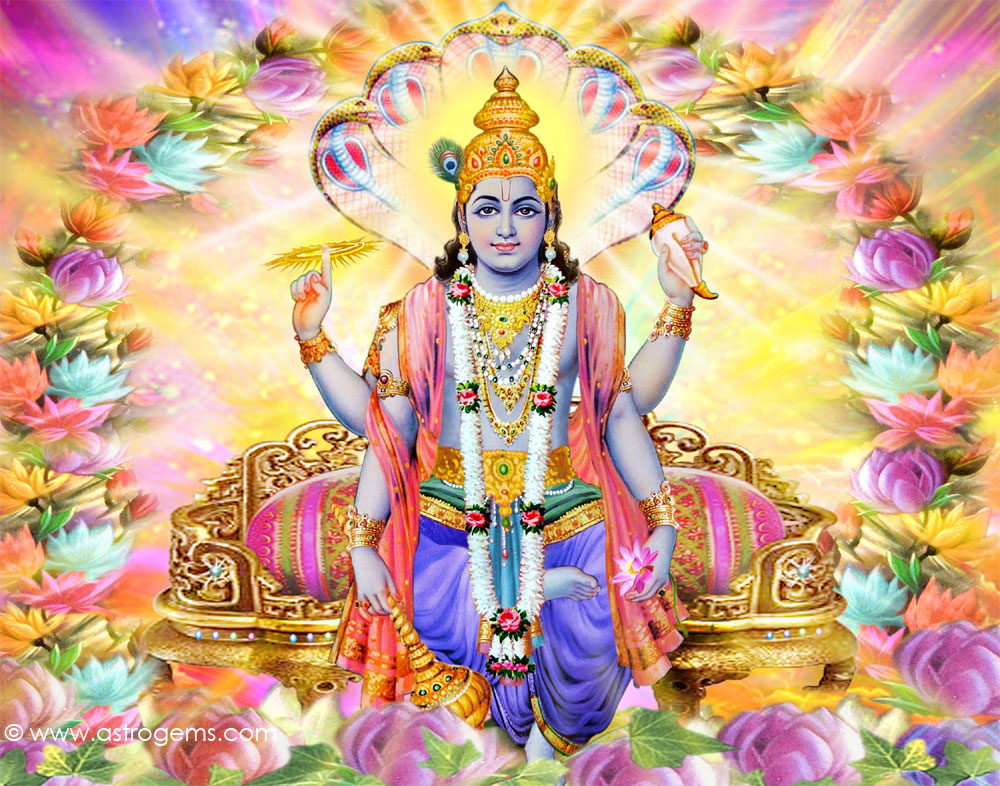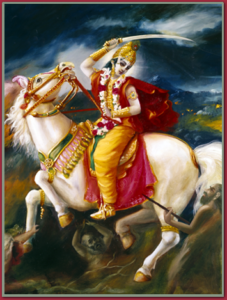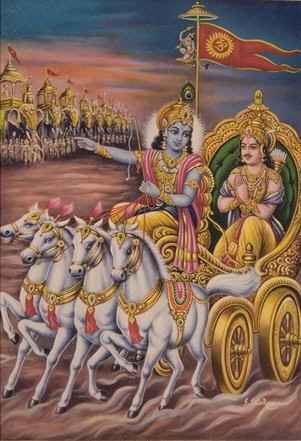Cycles of Evolution

Satya yuga = Age of Truth/Golden Age
Yuga is an era within a four age cycle that begins with Satya yuga, the beginning, the golden age before the downward cycle towards destruction.
At the end of the cycle, Kalki will arrive (destroyer of filth; she/he is the 10th and last incarnation of Vishnu, pictured) and get rid of the civilizations and degradation to reveal the coming of a new Golden Age. That cycle of evolution will now be over and a new one can begin.

We are nearing the end of one cycle of evolution and it is absurd to say that humanity is still progressing and getting better. One can just look at the state of the environment around the world for proof of that. Shopping malls and pavement after pavement after pavement is not progress. In my opinion, it’s the opposite. Hearing about the destruction of the environment literally forms a pit in my stomach, I can feel the nausea hit. I hope that Kalki arrives soon because living at the end of this cycle of evolution, if this theory is true, is pure Hell.
Sadhana = the work that a person is perfectly suited for in life; what they should dedicate their lives to; the work most people only get to do in their free time away from mundane “normal” work
Bodhisattva = a liberated being, one who “is able to reach Nirvana” but does not let him/herself do so, is re-born again and again, in order to save other souls who have not been enlightened yet.
Arhats = Are the same as Bodhisattvas (both are “above time”/liberated/enlightened beings except the Arhats have “reached Nirvana” and “remain aloof from the world,” not trying to save other souls themselves. These two types are based off of Buddhist teachings.
Mahakala = a deity that protects Dharma, or the natural ways of life that are positive and make life possible; the “cosmic law and order”. The opposite of Dharma is Adharma. Anyways, Mahakala protects the Dharma from degeneration and corruption; an individual who worships him is protected from delusions and deceptions in life (Buddhism); in Hindusim, he consorts with Kali, (not the demon who is present during Kali Yuga!) a goddess who is a destroyer of evil forces, but specifically a destroyer. Mahakala destroys to transform. Therefore, he is not inherently, “evil”.

Kshatriya = a caste (Varna) in Hindu society, the second highest in rank. It is the military or ruling class, made up of “warriors.” In India, people of this caste are mostly in Northern India. Different than the Brahmans, they will eat meat, except beef and drink alcohol.
These warriors also feel “difficulties exist only to be overcome and for whom the impossible has a strange fascination.”
Krishna is Vishnu (Narayana) in human form, or the complete incarnation. Vishnu is Narayana himself. So the top picture is Narayana himself apparently, or Vishnu. Confusing.
Zukunft, oder Untergang (German) = Future, or ruin!
Baghatur (Mongolian) = valiant warrior or hero
Apparently the Mongols refuse to eat fish unless they are starving.
Thutmose IV was the 8th Pharoah of the 18th dynasty of Egypt ruling in the 14th century BC (1400-1301 BC). His other name is Menkheperure (“Established in forms is Re”). His major accomplishment during his reign was the restoration of the Sphinx of Giza. He also established peaceful relations with a kingdom called Mitanni which was based in present-day northern Syria. They started an alliance with Egypt as the Hitties were becoming a more powerful kingdom and they wanted to be allies against them.


Thutmose IV was said to hold authority directly from the god Amon or Amun. He originally was the patron god of Thebes in Egypt which became the capital.

Potentate = monarch, or rulter; autocratic
The Mitanni kingdom finally allowed, after several attempts, to marry their royal daughter to the king of Egypt, Thutmose IV. The Mitanni were of Aryan blood while the Egyptians were of mixed races including Old European Mediterranean and Proto-Nordics at that time. The Nordic Indo-Europeans had not penetrated that far yet, but I guess the Aryan tribe (Indo-Europeans) had to the area of Mitanni by the 14th century.
The daughter eventually married Thutmose IV but probably did not accept the god of Egypt in her heart, Amun, but rather, the ancient pantheon of gods from her area in Mesopotamia, including the supreme god named Anu, a Sun-god.

Mithra was considered a solar deity, considered the friendly aspect of the sun by the Mitanni; the light and power behind the sun. Surya also means Sun in Sanskrit. So therefore, the new Egyptian Queen was probably more familiar with these deities than with Amun upon arriving to Egypt.

It is speculated that Akhenaten, Amenhotep the Fourth (IV), was at least half Aryan, or even 3/4 Aryan. His grandfather, Thutmose IV was Egyptian who married Mutemuya (the asked about daughter from Mitanni) was Aryan from Mitanni. These two had Amenhotep the III who married Tiy, whose parents were both speculated to be Mitannian, definitely the father (Yuaa). Her mother was Tuaa. Amenhotep the III and Tiy had Akhenaten, therefore, he had a lot of Aryan blood in him from the Mitanni kingdom. Tiy’s family were part of a group of Mitannis who lived around the Egyptian court for whatever reason, I guess because they were major allies with each other and had married across kingdoms.
Akhenaten means “joy of the sun;” he created an entirely new religion in Egypt, getting rid of the worship of Amun, in order to worship the one and only Aton (or Aten).









Cool.